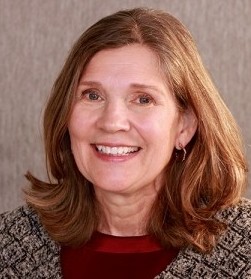Navigating the CST Learning Curve
There will be a ‘new normal’ for healthcare professionals and students across VCH, PHC and PHSA once the Clinical & Systems Transformation (CST) project is rolled out at a site.
Changes to workflows and a powerful new shared clinical information system are just the beginning and mean it’s essential that we have a comprehensive education and clinical support model in place.
Shifting from being largely paper-based to a primarily electronic work environment is a major change, but staff aren’t alone. Barb Lawrie says there will be a blended learning approach that is tailored to different roles and clinical workflows.
“Having a good learning strategy is critical,” says Barb, Executive Director, Clinical Education and Collaborative Practice, VCH and a member of CST’s Transformational Learning Advisory Group. “Our goal is that go-live is not as chaotic as people may be anticipating. To achieve this, we need a good strategy up front to get our staff comfortable with the tools.”
We are proposing that education includes a combination of self-paced online sessions, classroom courses and simulated patient scenarios. This would involve hands-on practice with the new clinical information system.
Learning sessions will be held before, during and after go-live to help provide clinicians with the knowledge and skills they need to successfully use the new system and understand the clinical workflows.
CST’s Transformational Learning team will work with site leaders to identify areas where staff may require additional education. This is to ensure everyone has the appropriate knowledge and competencies before we switch over.
We are also proposing to have designated coaches who are well-versed with the system and able to provide at-the-elbow support for staff to support their transition.
Our learning model has been designed for frontline staff by frontline staff, who know what they need to feel comfortable and able to continue doing their best work.
“There’s going to be bumps along the way, but we need to keep our eye on the prize in terms of improving the quality of care for our patients and ensuring access to information will be much better for providers,” says Barb, who’s also an experienced nurse.
Barb understands staff and leaders are concerned about backfill for education. This is currently being factored into the plan for learning.
For those who are apprehensive about the change, Barb makes it clear that they will be supported.
“The first step is getting people comfortable with computers because this is the way healthcare’s going to be delivered. We will all be required to use the new electronic system,” she says. “We have a responsibility to make our staff as comfortable with the new tools and processes as we can.”
Although change might feel scary, Barb says the benefits of CST outweigh the challenges and it will be worth it.
“I’ve been a nurse for over 35 years and I have been dreaming of this day. This will drive quality and safety for clinicians,” she says. “Patients won’t need to repeat their information over and over or carry copies of their documents with them, worried that a clinician won’t have the right information. For patients, it’s just amazing. The future is incredible.”
Stay tuned for more information about the plan for learning and how to boost your computer skills. In the meantime, free classes are offered by academic institutions like the UBC Learning Exchange or libraries, including the Vancouver Public Library .
Background information
• CST is a joint initiative of VCH, PHSA and PHC, and one of the largest and most complex healthcare projects in Canada. It spans across several areas of the continuum of care, including: acute care inpatient and outpatient units and ambulatory care. As well as creating consistent, leading practices and a shared clinical information system, CST will deliver HIMSS Level 5 functionality.
• Clinical design teams, made up of hundreds of highly-skilled, multi-disciplinary professionals from across the three Health Organizations and Team IBM (experts from IBM Technical Services, Deloitte, Leidos Solution Builders and the University of Pittsburgh Medical Centre), started work on April 7, 2014. These teams are tasked with designing our future workflows, based on leading practices. In doing so, they are defining the requirements for our new clinical information system.
For more information, please contact Donna Stanton, CST Executive Director/Transformation Lead, VCH at donna.stanton@vch.ca.
You’re invited to submit suggestions for future articles. If you have questions or feedback, please email info@CSTproject.ca.

